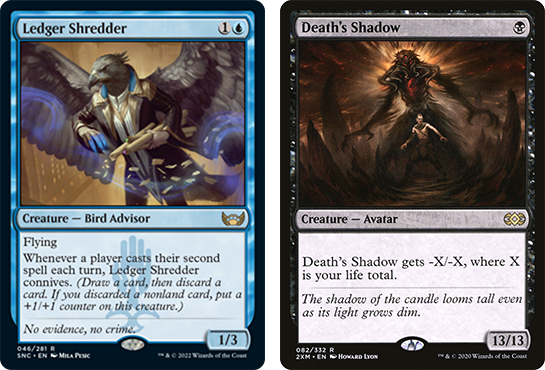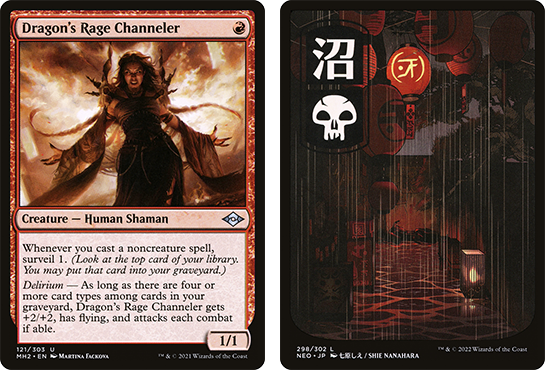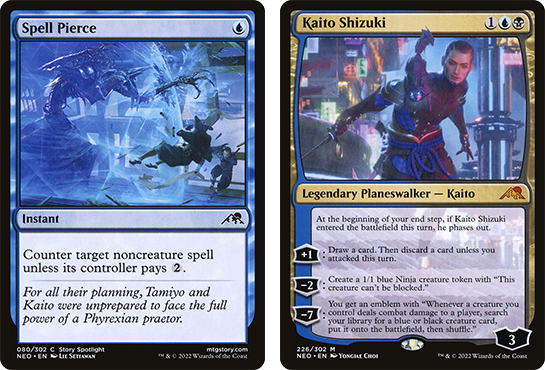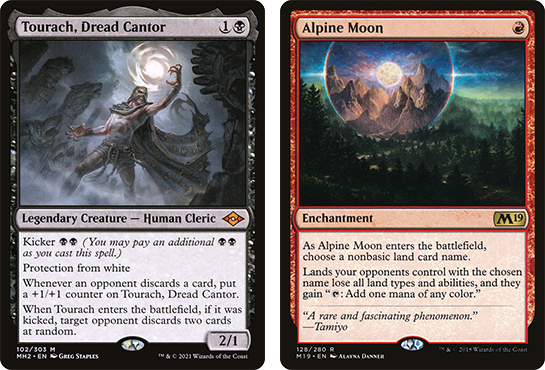Grixis Death’s Shadow is on the rise in Modern, recovering from Lurrus largely thanks to a card Michael is a big fan of – Ledger Shredder.
Just earlier this year Grixis Death’s Shadow was one of, if not the best decks in Modern. Then came the Lurrus ban, GDS players had to figure out if the archetype was still playable. Naturally the play rate of GDS declined as players experimented with different cards. Ultimately players found it was just better to play Murktide for a while, and that made sense. Murktide already filled a similar role as GDS, was already a good deck, and didn’t have anything banned.
The printing of Ledger Shredder provided a spark of hope for GDS, but there was a possibility that Murktide would just use it better. That definitely wasn’t going to stop me from trying, so I made a list to try out.
This list, while not vastly different from the current lists, when I tried it felt just okay. I don’t believe the changes that bring us to current lists are the driving factor behind the resurgence that GDS is seeing. The core concept of the deck remains the same, just a couple of flex slots are different.
So what does Shredder do for GDS? Honestly, it checks a lot of boxes. Shredder is cheap, evasive, helps filter draws, puts cards into the graveyard for delirium, and can even throw Kroxa into the graveyard for free. Perhaps most importantly, Shredder blocks well; a 2/4 flier walls off most of the common threats in Modern. GDS decks of old would need to sprint their life total to about nine in order to be able to close games in time, because at that point, Death’s Shadow was the main game plan. Now, thanks to Ragavan, DRC, Ledger Shredder, and Kroxa, GDS has the option to play plenty of games without Death’s Shadow being the centerpiece. This means that there are going to be plenty of games where you want to stay at a relatively healthy life total. Death’s Shadow isn’t consistently available on turn two anymore, now it functions closer to a turn three or four play that swings the battlefield in your favor, especially when you can interact and cast a Shadow in the same turn. Being able to play a slower defensive game, and letting your opponent turn on your Death’s Shadow for you is a powerful option that GDS didn’t realistically have access to before.
Ultimately the metagame following the Lurrus ban was wide open, which tends to be unfavorable for GDS since our suite of interaction and sideboard cards needs to accommodate too many decks. I was seeing more success with Murktide at the time, so I shelved GDS until the metagame solidified.
A couple weeks later Kanister won a Modern challenge on MTGO with GDS. Looking at the metagame it was predominantly Murktide, Four- Color Yorion/Elementals, and combo decks trying to beat Yorion. Murktide started to slip from its throne at the top of Modern, as Yorion decks continued to get more popular, the worse Murktide looked. I was sensing that we were close to a metagame where GDS would be a viable choice again.
Kanister’s challenge win came with what I would expect in the main deck, except for two copies of Terminate, and three copies of Death’s Shadow. Two copies of Terminate has been standard in GDS sideboards for a while as an easy answer to Murktide Regent as well has being good in other creature-based matchups. I like preboarding Terminate against Murktide, especially when it is sitting around 12% of the metagame. Terminate also adds value to the Amulet Titan matchup, which I believe is still good, but got worse since Dress Down left the main deck.
I understand the logic behind cutting a Death’s Shadow, because it is like my logic for cutting a Murktide Regent from Izzet Murktide, but I believe this is different enough for me to disagree with. The idea that Death’s Shadow doesn’t impact the game until turn four most of the time does make it an attractive cut. However, if you’re already jumping through the hoops to fit Thoughtseize, Death’s Shadow, and a painful mana base into the deck, you should play the full four copies. Drawing multiple Death’s Shadow isn’t nearly as bad as drawing multiple Murktide Regent in most cases. Your opponent will almost always need to damage you to win the game, which leads to explosive turns where you finally get below 13 life and play multiple Death’s Shadow in the same turn.
Kanister’s sideboard is tuned for a specific weekend, so I won’t touch on it much. It looks like it was built with Hammer, Murktide, Living End, and Four-Color. I agree with the targets Kanister seems to be setting, but I would build things slightly differently, favoring more toward Four-Color by finding room for a Kaito Shizuki. Speaking of which, let’s look at how I would build GDS for this weekend.
19 Lands: GDS plays among the fewest lands in Modern, and that is to maximize your ability to cast multiple spells in the same turn early in the game. If four Ledger Shredder and four Expressive Iteration are in the deck, it is worth moving up from 18 to 19 lands. Expressive Iteration and Ledger Shredder are both two drops that you often don’t want to play on turn two, but frequently want to play on turns three or four. Eight two drops that function more as three drops leads me to wanting the 19th land to support those cards. I would also like to note that McWinSauce’s MOCS finals list played 20 lands, which I agree with if you’re playing main deck Tourach, Dread Cantor, but otherwise without a Rakdos canopy land, I don’t think I’d play 20. I firmly believe that basic Mountain is easily the worst card in any GDS list that has one. There are arguments that are made to play it for the Burn matchup, but in my opinion, the small amount you gain against Burn isn’t worth how bad it is against everything else. Two Steam Vents and a Mountain means that there are three non-black lands in the deck, and any hand without black mana is a mulligan nearly every time. Fiery Islet isn’t good enough for similar reasons, but if we had access to the Rakdos or Dimir version I’d easily play one. My preferred mana base is 11 fetch lands, 7 shock lands, and a Swamp.
3 Dragon’s Rage Channeler: I do like Dragon’s Rage Channeler, but I really wanted to find room for the 19th land, and I believe the cuttable cards are the second Terminate, fourth DRC, or second Kroxa. Four copies of Ledger Shredder mean that GDS has more threats than it used to, which means that cutting a threat isn’t completely off the table. As Endurance continues to see high amounts of play, I think the best move to find room for the 19th land.
0 Inquisition of Kozilek: I recently wrote a piece on the failing effectiveness of discard spells in Modern. I still believe that is true, which means I generally want as little discard in my deck as possible now. Thoughtseize is a necessary enabler for Death’s Shadow, so it gets to stay, which means Inquisition is out.
2 Fatal Push, 0 Lightning Bolt: My earlier versions of Shredder GDS were high on Lightning Bolt as a proactive spell to be able to trigger connive more frequently. I’ve learned two things since then, first being that I didn’t need to try to trigger connive every turn, doing so can leave me exposed to the opponent’s game plan because I ended up using my spells inefficiently. Playing normal games of Magic and Shredder will grow naturally. Second, I learned that Lightning Bolt isn’t the removal spell that it once was. Against many of the top decks right now, Lightning Bolt is good against Hammer and Murktide, and just fine everywhere else. This led me to swapping the Lightning Bolt for a second Fatal Push, which is a much more reliable removal spell in Modern, as it will always kill Ledger Shredder, and can easily kill Omnath, Dryad of the Ilysian Grove, large construct tokens, etc.
2 Spell Pierce, 1 Flusterstorm: I’ve seen a lot of lists with one Spell Pierce and two Flusterstorm, which is fine, as that tells me they’re just aiming more for the cascade decks. It is important to have access to Flusterstorm for those matchups, but Spell Pierce does a reasonable job there, while being good against Four-Color Yorion because they can beat an early Wrenn and Six or Teferi, Time Raveler.
2 Kaito Shizuki, 1 Tourach, Dread Cantor: For a long time, I was higher than most people on playing three copies of Tourach in the sideboard for the Four-Color Yorion matchup. That is until they started playing a pile of Veil of Summer in the sideboard. Having your kicked Tourach shut down by a Veil of Summer is incredibly bad, so I don’t want to be all in on them, but they are generally still good enough to have access to one. Before Ledger Shredder, Kaito was a main deck card that I was happy with given its strength against other fair decks. I’ve seen players talk about The Royal Scions in this slot, and I don’t like that, because it is important that the cards you bring in against Four-Color and other highly interactive decks is that they need to generate resources, which The Royal Scions just can’t do.
Alpine Moon vs Kolaghan’s Command: with my sideboard set up the way it is, I believe that I get access to either Kolaghan’s Command or Alpine Moon, which sounds a bit odd, but they’re both cards I’d bring in against Hammer that have applications in other places. Given the rising stock of Scapeshift and Amulet Titan to try and beat Omnath and friends, I think Alpine Moon gets the nod.
Why Play GDS instead of Murktide?
It is no secret that Murktide is likely the second-best deck in Modern behind Four-Color Yorion, so why is playing GDS instead a good decision? The short answer is the matchup against Solitude decks is noticeably better for GDS than it is for Murktide. Thoughtseize gives you an informed decision of what you need to play around, where, with Murktide, you need to have mana up the whole time for Counterspell. Kroxa, Tourach, and Kaito all are quite good against Four-Color Yorion, cards that Murktide just doesn’t have access to. Naturally, Four-Color isn’t the entire metagame, GDS is renowned for its strength against combo decks, which are the favored strategy for beating Yorion. Murktide is good against many of the combo decks as well, but I think that GDS has an edge against Living End and Rhinos, due to its threats and disruption being cheaper, which lets GDS get more done in the critical first three turns of those matchups. Notably GDS also has a much better matchup against Hammer thanks to Fatal Push and Terminate.
Murktide used to be a tough matchup for GDS because it was hard to effectively answer Murktide Regent, but now with main deck Terminate, Mystical Dispute, and Unlicensed Hearse in the sideboard, that matchup is completely manageable. Murktide has an edge against Yawgmoth and Burn given that Murktide Regent is excellent in both of those matchups. Though, if you’re aiming for the top dogs of Modern, I believe that GDS is currently a competitive choice.
Tips and Tricks
With Ledger Shredder there are new interactions to consider, so let’s run down some of the common ones.
- Consider holding your Mishra’s Bauble if you don’t have a DRC in hand, in case you draw a Shredder or DRC. The exception to this is if you’re looking for something specific, like a land, or a removal spell for an opposing Ragavan, or something similar.
- If you have a DRC and a Shredder in play you should stack your surveil trigger so that it resolves before your connive trigger. This is because you’ll want information about what you’re going to draw, especially if you want to find a specific card. The exception to this is if you’re hellbent, in that case resolve your connive trigger first as you’ll be discarding that card no matter what, so you’ll want the information of what the top card of your deck is after surveilling, should you leave it on top.
- Holding extra lands is better than it has been because you can loot them away with Shredder, so consider if you’ll need that land in play before playing it. The biggest reason to play extra lands is getting to the point where you can cast Jegantha if it is reasonable to do so in the matchup.
- Unlicensed Hearse will die to Dress Down if it is a creature, so be careful with your timings when it comes to these two cards.
That is all that I have for this week. I hope everyone else is as excited as I am to have GDS back on the menu for good picks for an upcoming Modern tournament. It is important to remember that just because my sideboard is built in a certain way doesn’t mean that it is correct for all metagames. I have mine built primarily for the Magic Online metagame, which in large paper tournaments, tends to be close. If your metagame isn’t reflective of the MTGO meta, consider adjusting your sideboard to accommodate that. As always you can find me on Twitter at @RappaciousOne for questions, comments, or feedback. I’ll see everyone back here for more Modern content next week!
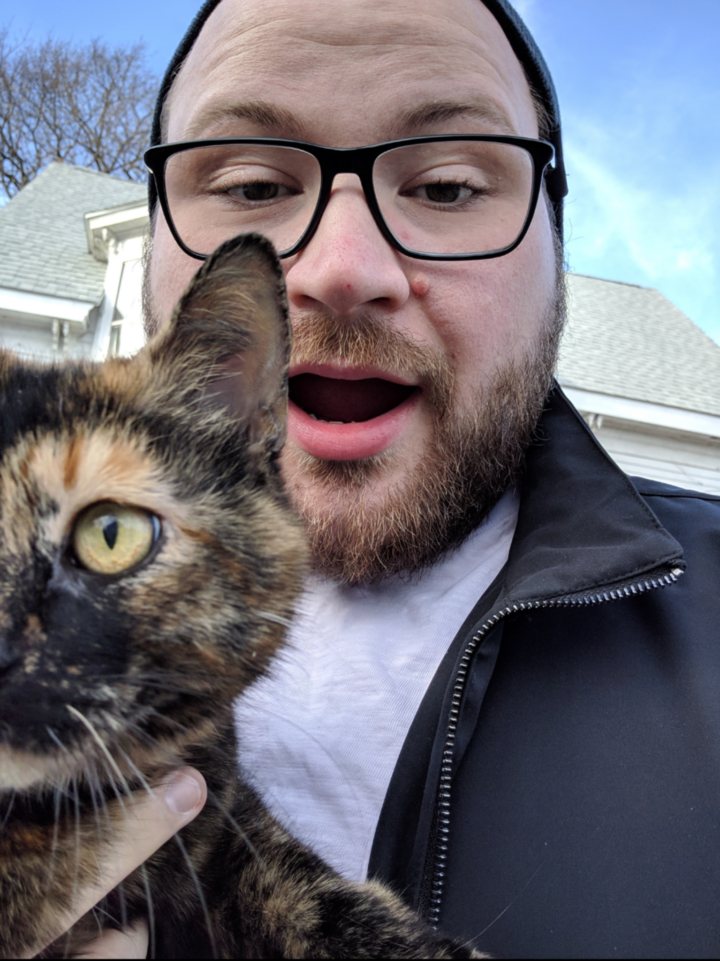
Michael Rapp is a Modern specialist who favors Thoughtseize decks. Magic sates his desire for competition and constant improvement.


